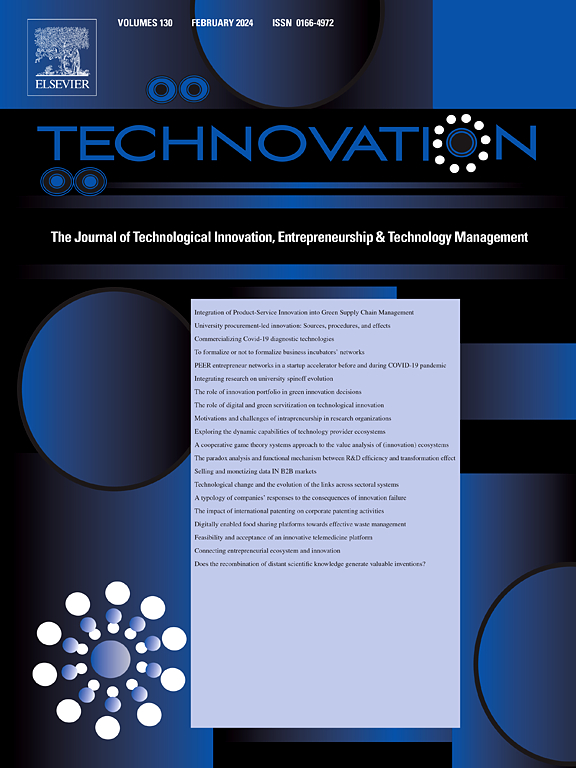The long-term evolution of technological complexity and its relationship with economic growth
IF 11.1
1区 管理学
Q1 ENGINEERING, INDUSTRIAL
引用次数: 0
Abstract
Innovations are widely accepted as fundamental drivers of economic growth by increasing productivity and creating new markets. However, empirical evidence on the long-term relationship between technological progress and economic growth remains scarce, with few studies considering shifts in technologies' fundamental properties, such as their degree of complexity. Yet, higher levels of complexity are argued to increase technologies' economic potential, and consequently, ignoring this dimension of technologies provides an incomplete picture of innovations’ growth effects.
We address this research gap by exploring the relationship between economic growth and technological complexity over more than 170 years in the United States (US). Utilizing patent data, the concept of the complexity frontier, and partial wavelet analysis, we find that economic growth has not been driven by patented innovation and technological complexity for most of this period. However, since the beginning of the ICT revolution in the 1990s, it has significantly contributed to GDP growth.
One Sentence Summary: Technological complexity drives economic growth.
创新通过提高生产力和创造新市场,被广泛认为是经济增长的根本动力。然而,关于技术进步与经济增长之间长期关系的经验证据仍然很少,很少有研究考虑到技术基本属性的变化,如复杂程度。我们针对这一研究空白,探讨了美国 170 多年来经济增长与技术复杂性之间的关系。利用专利数据、复杂性前沿概念和局部小波分析,我们发现,在这一时期的大部分时间里,专利创新和技术复杂性并没有推动经济增长。一句话总结:技术复杂性推动经济增长。
本文章由计算机程序翻译,如有差异,请以英文原文为准。
求助全文
约1分钟内获得全文
求助全文
来源期刊

Technovation
管理科学-工程:工业
CiteScore
15.10
自引率
11.20%
发文量
208
审稿时长
91 days
期刊介绍:
The interdisciplinary journal Technovation covers various aspects of technological innovation, exploring processes, products, and social impacts. It examines innovation in both process and product realms, including social innovations like regulatory frameworks and non-economic benefits. Topics range from emerging trends and capital for development to managing technology-intensive ventures and innovation in organizations of different sizes. It also discusses organizational structures, investment strategies for science and technology enterprises, and the roles of technological innovators. Additionally, it addresses technology transfer between developing countries and innovation across enterprise, political, and economic systems.
 求助内容:
求助内容: 应助结果提醒方式:
应助结果提醒方式:


